We were reminded how localised the weather is today. We had spent the morning at the house in fine weather, although it had rained overnight. We set off for the ferry across to Wexford and went through a band of heavy rain in the short trip across the peninsula (10 km). It was fine most of the day where we were although at one stage we did here very loud thunder. When we arrived back at 8pm the ground was wet here and it had clearly rained quite heavily.
We took the car ferry over to Wexford county and went straight to Tintern Abbey
. This is the abbey that was built by William Marshall after he promised God to do so if he survived the storm at sea on his first visit to Ireland. Because of his Welsh connections it was called Tintern and the mother house was Tintern Abbey in Wales. It is also known as Tintern de Voto, Tintern of the Vow. The abbey was disbanded by Henry VIII but is well preserved because the family that took it over kept it as a manor house.
We were given a copy of the visitors guide to use and given an overview by the man at the counter. We then went into the ground floors of the abbey. The walls were almost all intact although the surfaces had deteriorated. We could see where shapes would have been carved but the surfaces had worn smooth over time. This abbey had been noted for its gargoyles and we also saw the remains of these on the outer walls as we left.
The order was Cistercian which was meant to be an austere order. However, there is evidence that sculptures and stained glass were in the abbey and it was the third richest abbey in Ireland at its height.
The tower was a bell tower for the abbey. It was fortified by the Colclough family that took it over and refurbished inside to use as a manor house. An example of Wattle and daub panels was also on display. These partitions dated from the conversion in 1556. These were oak frames filled with woven hazel rods covered with mud
. Some years later, the main rooms were lined with oak paneling and some of the paneling remained. As well as looking good these added a lot to the warmth of the rooms.
One room was filled with information about the family history. The abbey plus 5321acres was given to Anthony Colclough as a reward for service in Henry VIII’s army. It was a cheap way for the King to impose English authority in Ireland. The second owner married twice, a Protestant and a Catholic and the abbey stayed in the family although it was alternatively owned by Protestant and Catholic descendants. Under Cromwell it was restored to the Protestant branch of the family.
The family history included death by drowning, death in a duel, beheading, madness, bankruptcy, missing wills, political exile, family lawsuits and even an alleged poisoning (of an owner by his wife). It was like reading an over the top gothic novel. The abbey still stayed in one branch or other of the family until 1983
. The last and 14th owner was ‘Miss Marie” who inherited in 1912 and lived there at times in serious poverty as the land was sold off. She was remembered locally as being keen on music and the church and she gave the abbey to the Nation when she moved out in 1983.
There were a number of filing cabinets in the room. They contained mainly documents such as the various wills but also a rather gruesome head!!
By 2pm it was almost hot. We did a short and very attractive forest walk by a river to find a cache then headed for Wexford town. We were going to go to the Heritage Park but when we looked at the Park we realised we had seen most of the items in the display (round tower, oghen stones etc) already and in their original places so decided not to go in.
We used caches as a focus for a drive. We went to a monument which marks the bravery of lifeboat men who attended disasters at sea
. One disaster mentioned was the sinking of a schooner. One lifeboat crew saved 10 men from the schooner. However, another lifeboat capsized and nine crew drowned. The memorial was by the sea and included a picnic area as well.
We went to Our Lady Island which was the site of an ancient monastery dedicated to Our Lady. The ruins of the Augustinian Priory are still to be seen, as is the Norman tower which leans at a greater angle than the tower at Pisa. This is the site of an annual pilgrimage that lasts for some weeks and we happened to arrive on the last day.
Finally we went to Kilmore Quay, because I had heard it was a particularly attractive fishing village. It had a lot of thatched cottages near the entrance and the harbour is a busy port for fishing boats. The cache took us to a memorial in the town that we may otherwise not have known about. It did have some similarity to the seaman’s memorial in Nelson although this was much bigger.
The cache notes told us about the Memorial Trail and Garden, set up in remembrance of those lost at sea. The Garden is at Forlorn Point, an area reached by crossing a narrow causeway, overlooking Ballyteigue Bay, known as the graveyard of a thousand ships. The theme of the Trail and Garden is the experience of loss and the journey to recovery. It was the idea of Fr Jim Cogley, a local curate, and was achieved through the work of a voluntary committee
.
The garden is not just a memorial to the dead but a place to help all those who are grieving to come to terms with their loss. A Vigil Sculpture of two grieving figures looking out to sea and supporting each other, by local artist Ciaran O’Brien, leads to the garden which is designed in the shape of a ship and includes a Ship’s Wheel sculpture, a Compass Fountain, a propeller recovered from SS Lennox—lost off the Saltee Islands in 1916, and a tall mast, supported by a plinth on which the names of people lost at sea are carved.
The number of names was staggering. It included a list of people who died in an aircrash, a family who had lost people from three generations and 3 children who had drowned while swimming on the same day. One plaque didn’t list the dead as there were 387 people. It told us of the sinking of an emigrant ship sailing from Liverpool to New York that foundered off the coast of Wexford. There were 373 passengers and 37 crew. 18 crew and 5 passengers survived and the plaque said the crew had ‘battened down the hatches’ (shutting the steerage passengers into their area so they had no chance to save themselves) in order to keep the life rafts for themselves. It was a sobering read.
We then drove back to the ferry and had a drink at the Strand Hotel, mainly to use the wifi so we get check our emails etc. We then went back home to cook pasta for tea and an early night as we are going west tomorrow.
Wandering about Wexford
Wednesday, September 08, 2010
 Ballymacaw, County Waterford, Ireland
Ballymacaw, County Waterford, Ireland
Other Entries
-
97Moor travels
Aug 2316 days prior Brampford Speke, United Kingdomphoto_camera14videocam 0comment 0
Brampford Speke, United Kingdomphoto_camera14videocam 0comment 0 -
98Motoring to Bealieu
Aug 2415 days prior Chichester, United Kingdomphoto_camera10videocam 0comment 1
Chichester, United Kingdomphoto_camera10videocam 0comment 1 -
991066 and all that
Aug 2514 days prior Chichester, United Kingdomphoto_camera3videocam 0comment 0
Chichester, United Kingdomphoto_camera3videocam 0comment 0 -
100Catching up with Chalky and Pam
Aug 2613 days prior Chichester, United Kingdomphoto_camera16videocam 0comment 0
Chichester, United Kingdomphoto_camera16videocam 0comment 0 -
101Visiting Leeds Castle
Aug 2712 days prior Chichester, United Kingdomphoto_camera10videocam 0comment 0
Chichester, United Kingdomphoto_camera10videocam 0comment 0 -
102Chichester to Winchester to London
Aug 2811 days prior London, United Kingdomphoto_camera26videocam 0comment 0
London, United Kingdomphoto_camera26videocam 0comment 0 -
103Fast cars, a Palace and treacle
Aug 2910 days prior London, United Kingdomphoto_camera6videocam 0comment 0
London, United Kingdomphoto_camera6videocam 0comment 0 -
104Cruising down the River
Aug 309 days prior London, United Kingdomphoto_camera11videocam 0comment 0
London, United Kingdomphoto_camera11videocam 0comment 0 -
105There'll be blue birds over......
Aug 318 days prior London, United Kingdomphoto_camera22videocam 0comment 0
London, United Kingdomphoto_camera22videocam 0comment 0 -
106To Ireland begorrah...
Sep 017 days prior Ballymacaw, Irelandphoto_camera2videocam 0comment 0
Ballymacaw, Irelandphoto_camera2videocam 0comment 0 -
107A fox on the run
Sep 026 days prior Ballymacaw, Irelandphoto_camera3videocam 0comment 0
Ballymacaw, Irelandphoto_camera3videocam 0comment 0 -
108Cuisin' the Copper Coast
Sep 035 days prior Ballymacaw, Irelandphoto_camera6videocam 0comment 0
Ballymacaw, Irelandphoto_camera6videocam 0comment 0 -
109Quick note to everyone re earthquake
Sep 044 days prior Ballymacaw, Irelandphoto_camera0videocam 0comment 1
Ballymacaw, Irelandphoto_camera0videocam 0comment 1 -
110A shaky start
Sep 044 days prior Ballymacaw, Irelandphoto_camera6videocam 0comment 0
Ballymacaw, Irelandphoto_camera6videocam 0comment 0 -
111From Famine ships to hurling
Sep 053 days prior Ballymacaw, Irelandphoto_camera4videocam 0comment 0
Ballymacaw, Irelandphoto_camera4videocam 0comment 0 -
112By Hook or by Crooke
Sep 062 days prior Ballymacaw, Irelandphoto_camera14videocam 0comment 0
Ballymacaw, Irelandphoto_camera14videocam 0comment 0 -
113It's a long way...
Sep 071 day prior Ballymacaw, Irelandphoto_camera17videocam 0comment 0
Ballymacaw, Irelandphoto_camera17videocam 0comment 0 -
114Wandering about Wexford
Sep 08 Ballymacaw, Irelandphoto_camera15videocam 0comment 0
Ballymacaw, Irelandphoto_camera15videocam 0comment 0 -
115The Rain of Kerry
Sep 091 day later Ballymacaw, Irelandphoto_camera5videocam 0comment 0
Ballymacaw, Irelandphoto_camera5videocam 0comment 0 -
116Nothin' much doin'
Sep 102 days later Ballymacaw, Irelandphoto_camera3videocam 0comment 0
Ballymacaw, Irelandphoto_camera3videocam 0comment 0 -
117A load of Blarney
Sep 113 days later Ballymacaw, Irelandphoto_camera15videocam 0comment 0
Ballymacaw, Irelandphoto_camera15videocam 0comment 0 -
118The products of Waterford
Sep 124 days later Ballymacaw, Irelandphoto_camera13videocam 0comment 0
Ballymacaw, Irelandphoto_camera13videocam 0comment 0 -
119Doin' Dublin
Sep 135 days later Ballymacaw, Irelandphoto_camera14videocam 0comment 1
Ballymacaw, Irelandphoto_camera14videocam 0comment 1 -
120Old fossils in Kilkenny
Sep 146 days later Ballymacaw, Irelandphoto_camera17videocam 0comment 0
Ballymacaw, Irelandphoto_camera17videocam 0comment 0 -
121Ciao Ballymacaw
Sep 157 days later Rome, Italyphoto_camera2videocam 0comment 0
Rome, Italyphoto_camera2videocam 0comment 0 -
122Cheers Bros
Sep 168 days later Rome, Italyphoto_camera12videocam 0comment 0
Rome, Italyphoto_camera12videocam 0comment 0 -
123Roamin' Rome
Sep 179 days later Rome, Italyphoto_camera8videocam 0comment 0
Rome, Italyphoto_camera8videocam 0comment 0 -
124All aboard please!!
Sep 1810 days later Civitavecchia, Italyphoto_camera8videocam 0comment 0
Civitavecchia, Italyphoto_camera8videocam 0comment 0 -
125Birthday on the Med
Sep 1911 days later Livorno, Italyphoto_camera38videocam 0comment 0
Livorno, Italyphoto_camera38videocam 0comment 0 -
126A lucky break at Monte Carlo...
Sep 2012 days later Monte-Carlo, Monacophoto_camera34videocam 0comment 3
Monte-Carlo, Monacophoto_camera34videocam 0comment 3 -
127The rain in Spain...
Sep 2113 days later Barcelona, Spain and Canary Islandsphoto_camera22videocam 0comment 0
Barcelona, Spain and Canary Islandsphoto_camera22videocam 0comment 0 -
128Getting into Gaudi
Sep 2214 days later Barcelona, Spain and Canary Islandsphoto_camera6videocam 0comment 0
Barcelona, Spain and Canary Islandsphoto_camera6videocam 0comment 0 -
129Meandering through Mallorca
Sep 2315 days later Mallorca, Spain and Canary Islandsphoto_camera5videocam 0comment 0
Mallorca, Spain and Canary Islandsphoto_camera5videocam 0comment 0 -
130A lazy day at sea
Sep 2416 days later Palma de Mallorca, Spain and Canary Islandsphoto_camera0videocam 0comment 0
Palma de Mallorca, Spain and Canary Islandsphoto_camera0videocam 0comment 0 -
131Out of Africa
Sep 2517 days later La Goulette, Tunisiaphoto_camera9videocam 0comment 0
La Goulette, Tunisiaphoto_camera9videocam 0comment 0 -
132Lazy Sunday in Sicily
Sep 2618 days later Trapani, Italyphoto_camera7videocam 0comment 0
Trapani, Italyphoto_camera7videocam 0comment 0

 Ballymacaw, County Waterford, Ireland
Ballymacaw, County Waterford, Ireland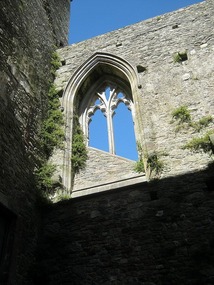


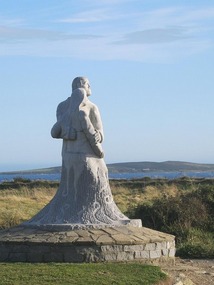
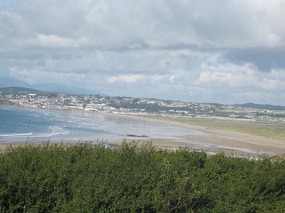






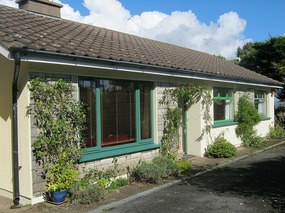
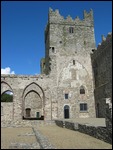

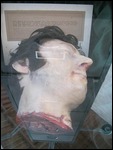
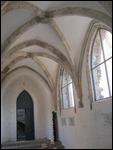
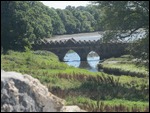
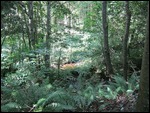
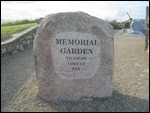
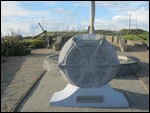
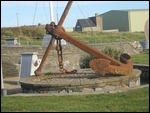
2025-05-22